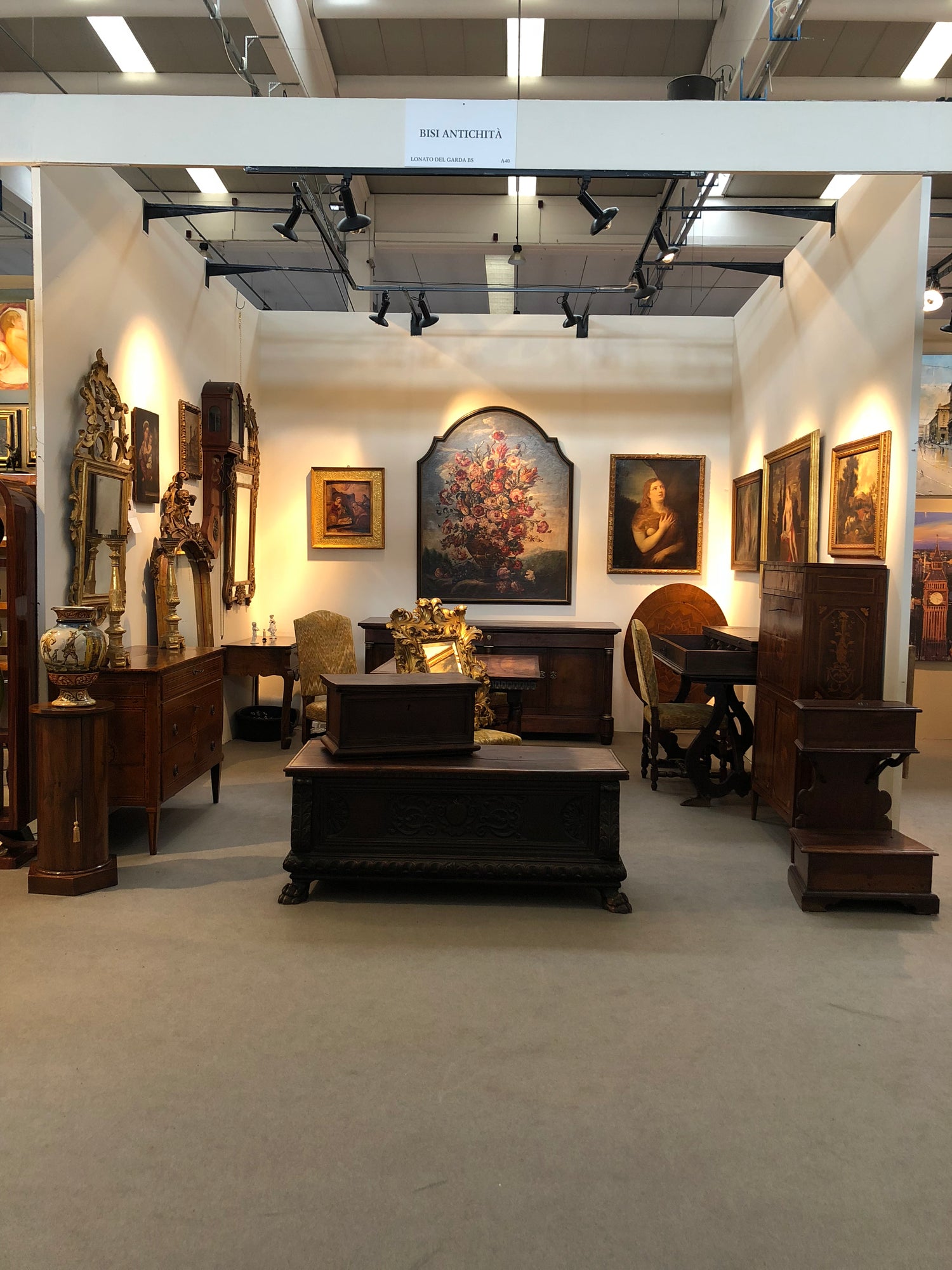The Liberation of St. Peter from Prison. 17th Century
The Liberation of St. Peter from Prison. 17th Century
Stefano Maria Legnani known as Legnanino (1661-1713), The liberation of Saint Peter from prison (oil on canvas).
The oil on canvas that we present can be attributed, due to its compositional structure, the rendering of some details (first and foremost the face of the angel of Correggio memory) and its chromatic aspect, to the Roman period of the Lombard painter Stefano Maria Legnani, known as Legnanino, an artist who rose to prominence above all thanks to the dossier-exhibition dedicated to him in Varese from 16 November 2013 to 26 January 2014.
In our case, it is a work that can be dated around 1686, a date that marks the beginning of the Milanese painter's "Roman period". , which coincides with what Coen (see P. Coen, “Legnanino and the Roman artistic system: stitches, Palazzo Carignano. The Baroque apartments and the paintings of Legnanino”, Florence, Giunti, 2011) considers a real turning point in his pictorial adventure: the meeting with Carlo Maratti, an experience that left a profound mark on Legnanino and of which his first altarpiece, preserved in the church of San Francesco a Ripa in Rome, bears traces.
After his early years at the Bolognese school of Carlo Cignani, thanks to whom Legnanino recovered the graceful lesson of Correggio and, after the aforementioned meeting with Maratti, Legnanino's Roman training was simultaneously influenced by the baroque style of Giovanni Battista Gaulli, known as Baciccio, to arrive, in his more mature results, at the suggestions of the Genoese school of Domenico Piola and Gregorio de Ferrari.
The entire artistic career of the Milanese painter can be described as “a brief and intense career, divided between the capital and the province, also touching more distant places such as Turin and Genoa, playing a not insignificant role as an innovator in the Lombard pictorial environment, in the years preceding the arrival of Tiepolo and the fashion for the large decoration of the eighteenth-century fresco” (see Marina dell'Olmo, il Legnanino, “A protagonist of the barocchetto in Milan between the seventeenth and eighteenth centuries”, Bologna 1998, page 1).
The painter, who left us many masterpieces in oil and fresco between Lombardy and Piedmont (the decoration of Palazzo Carignano in Turin, works in Saronno or in the churches of San Marco and Sant'Angelo in Milan, in the church of the Incoronata in Lodi, in Varese the altarpiece for the chapel of the Addolorata in the Sanctuary of Santa Maria del Monte (1693) and the XIV chapel of the Sacro Monte (1713)), in our canvas, the hagiographic representation of Saint Peter with the Angel (which anticipates similar compositional schemes, first of all that of the "Dream of Saint Joseph", Novara, Civic Museum, 1708), still appears tied to an academic imprint of Marattian origin, also due to the prevalence of dark tones, all combined with a modern reinterpretation of the Correggio roots, which constitute the leitmotif of all his pictorial production.
It is precisely the continuous homage paid by Legnanino to Correggio, reinterpreted in a modern way, that makes him "a painter with an autonomous style, immediately recognisable" (Dell'Olmo, Il Legnanino… cit., page 1).
Now, in our painting, if the Maratti tradition is more recognizable in the execution methods of Saint Peter (a certain woodenness, the cheekbones of the face), the legacy of Correggio is constantly present, here as elsewhere, in the angel, in which the painter mixes affectionate idealism with a composite classicism.
“These are the aspects that pass from the master to the pupil, readable in the faces of his elegant female characters, in the innumerable smiling angels that populated his compositions” ( Ibid.) and of which, in our canvas, we are offered one of the best examples.
Measurements: H 48 W 38
EPOCH Thinking about making metafield with features
EPOCH Thinking about making metafield with features
Material
Materials
Materials
dimensions - transport or notes
dimensions - transport or notes
Share











Frequently Asked Questions
Things to know
The items are in their natural state
All our pieces are authentic and retain the signs of time that tell their story. This means that they may present small imperfections, signs of wear or original patina, which for us are an integral part of their charm and uniqueness.
We restore on request
Unless explicitly requested, we leave the signs of time and imperfections intact, to preserve the authenticity and soul of the antique object. However, if you want a restoration intervention, our team of experts is at your disposal to evaluate together the most suitable solution.
We work only and exclusively by appointment
Our service is exclusive and personalized: we receive only by appointment to guarantee you our full attention. Contact us to arrange a meeting and discover our collection in complete tranquility.
How does transportation work?
We offer different transport solutions, depending on the size and delicacy of the item. We rely on specialized professionals to ensure that each piece arrives at its destination in perfect condition. Contact us for more details or to request a personalized quote

QUALITY AND PASSION FOR GENERATIONS
Since the mid-19th century, our family has been working wood with dedication, transforming a small workshop in Poggio Rusco into a reality rooted on Lake Garda. Since 2014 , we have moved away from the family tradition of furniture production, orienting ourselves towards the restoration and search for ancient treasures to offer to our customers, keeping intact the values of authenticity and quality.











